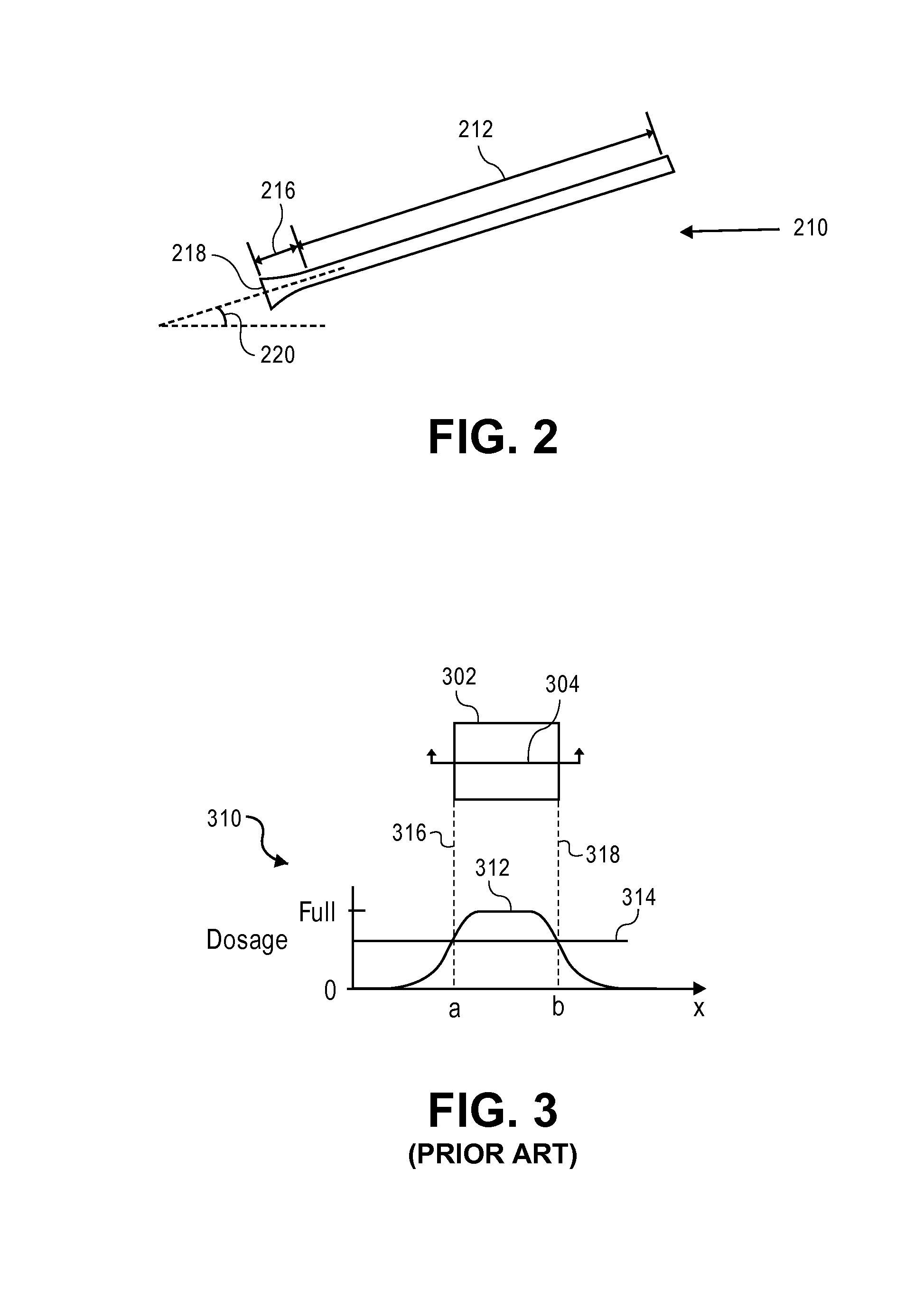Method and system for forming a diagonal pattern using charged particle beam lithography
- Summary
- Abstract
- Description
- Claims
- Application Information
AI Technical Summary
Benefits of technology
Problems solved by technology
Method used
Image
Examples
Embodiment Construction
[0043]The improvements and advantages of the present disclosure can be accomplished by forming center portions of continuous track-type patterns using overlapping rectangular variable shaped beam (VSB) shots, by forming near-end portions of the track-type patterns using non-overlapping rectangular VSB shots, and by generating shots for one or more transition regions between the center and near-end portions of the patterns, such that the transition region shots form smooth pattern transitions on the surface of a substrate or wafer between the center and the near-end portions of the patterns.
[0044]Referring now to the drawings, wherein like numbers refer to like items, FIG. 1 identifies an embodiment of a lithography system, such as a charged particle beam writer system, in this case an electron beam writer system 10, that employs a variable shaped beam (VSB) to manufacture a surface 12 according to the present disclosure. The electron beam writer system 10 has an electron beam source...
PUM
 Login to View More
Login to View More Abstract
Description
Claims
Application Information
 Login to View More
Login to View More - R&D
- Intellectual Property
- Life Sciences
- Materials
- Tech Scout
- Unparalleled Data Quality
- Higher Quality Content
- 60% Fewer Hallucinations
Browse by: Latest US Patents, China's latest patents, Technical Efficacy Thesaurus, Application Domain, Technology Topic, Popular Technical Reports.
© 2025 PatSnap. All rights reserved.Legal|Privacy policy|Modern Slavery Act Transparency Statement|Sitemap|About US| Contact US: help@patsnap.com



